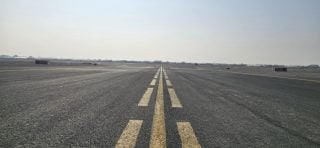
Ahead of demographic crisis?

Natural growth of population is among the crucial components providing regular development of the society and the opportunity for strategic forecast based on it. No any country can plan its further socio-economic, political and cultural development without sound demographic policy, importance of which in the contemporary world grows day by day.
Miscellaneous programs boosting birthrate are implemented in many countries of the world. A similar mid-term 2016-2018 program is launched in Armenia as well, one of the components of which is allocating AMD 1 million for the birth of a third child. Allotment of maternity certificates is also in force. A program providing affordable apartments to newly formed families has been developed as well, which, however, isn’t operated due to tiny resources.
As population censuses launched throughout Soviet period show Armenia’s population has recorded natural growth, comprising around 1.5 percent yearly.
Thus, in the 80s of the preceding century natural growth rates of Soviet Armenia were rather high, the peak of which was 1986, when the highest rate of Armenia’s demographic observations was recorded—81.192 children. Based on statistical data 544.654 children were born in the period of 1985-1991.
This high birthrate sharply fluctuates since Armenia’s independence. The reasons were drastic worsening of socio-economic conditions, the disastrous earthquake in Spitak, blockade and the liberation war waged for Karabakh.
If 70.581 children were born in 1992 in Armenia, 43.929—in 1997, then in 2001 that number dropped to 32.065. Overall 464.457 children were born in the first decade of Armenia’s independence, death rate comprised 247.064 people, and natural growth—217.443.
It should be noted that compared with the previous decade of 1992-2001 natural growth has reduced 5.3 times. The dynamics of natural growth of the population has constantly dropped since 1992, which, along with migration, more affected changes in the number of the population.
Reasons for reduction of birthrate year by year should not only be sought in absence of a considerable part of people at the reproductive age, but also against the background of unfolded hard socio-economic condition in the Republic.
It was anticipated that the lowest birthrate recorded in 2001 would increase afterwards in Armenia, as the generation born in late 70s and in the 80s entered into active marriage age, whose number considerably exceeded those born in the period of 60-70s.
Based on predictions at least 50-60 thousand children were to be born per year. However, those anticipations weren’t fully justified. If 32.380 children were born in 2002, then in 2010 that index reached 44.800, and already from 2011 it started to decrease. Despite the increase in the number of births recorded in 2002-2011, compared with 1992-2001 it has reduced by 1.2 and natural growth index—by 1.8 time. The reason was that most part of children was born abroad as a result of migration, and it comprises a rather solid number. And if in the first decade of the 20th century on average 50-60 thousand births were recorded in Armenia, it could provide certain stability for demographic processes, which from 2011 records regress only.
However, lacking of that reality in near decades will negatively influence on demographic processes. An Armenian family, which in the 80s of the 20th century comprised of 4.7 people, today comprises 3.3 persons only. Few are families in recent decades, where number of children surpasses three.
Regularity of having children has been diverted. If prior to independence it comprises 2-3 years, currently it’s 4-7 years. And currently quite few parents go to the third and more children. If 24.7 percent of the total number of births was 3 and more children in 1997, then based on 2015 data that index dropped to 19 percent.
The situation of natural reproduction isn’t successful either. Women at the age of reproduction have 1.6 children on average, while having 2.1 children is required for simple reproduction.
It should be mentioned that presently Armenia has entered a new phase of demographic processes. Unfavorable migration and demographic processes of recent decades will have their after-effect.
Census launched in Armenia in 2011 showed that sex and age rates of the country’s population have considerably worsened. Although compared with 2001 among the group of children aged 0-4 around 4 percent growth indicated increase of birth, nevertheless that index conceded to 1989 by 80 percent, which points at deep demographic decline. Among the group of children, aged 5-9 the picture was more concerning. In the period of 2001-2011 their number decreased by 80542. Among children, aged 10-14 that index was higher—116.400 children. And number of adults aged 15-19 decreased by 41314.
Unfolded demographic situation is worrying indeed, and in the forthcoming years will bring forward challenges to both army recruitment and the system of general and higher education. Thus, compared with 2012 number of young men recruiting to the army will decrease by 30 percent in 2019, and this in case when migration is not taken into account. In the field of higher education, number of 2017 applicants decreased by 1500 compared with 2016 and in the forthcoming years that rate will yet record a drop.
The next bothering demographic issue is that number of people aged 60 and more has sharply grown in Armenia. If in 1979 they comprised 7.9 percent of the population, in 1989—9.2 percent, then currently their number already exceeds 15 percent. If migration flow from Armenia doesn’t stop, growth of birth rate won’t be recorded, then in the forthcoming decade number of people aged 60 and more will exceed 20 percent, which will lead to Armenia’s “aging” society, full of irreversible economic and social implications.
Happening of that might also be conditioned by the circumstance that in the present demographic period generation born in the 90s enters into active marriage age, whose number is less by 40 percent than those born in the 1980s. Its proof is also the fact that in 2016 compared with 2012 number of births in Armenia reduced by 4.6 percent, number of deaths increased by 2 percent, and natural growth dropped by 6 percent. Further decrease in birth rate and increase in number of deaths may lead to the point that already in 2025 deaths in Armenia will exceed births and natural growth will have negative rates. This circumstance may more engrave negative demographic condition and accelerate decrease in the number of the population.
Artak Markosyan
PhD, Demographer
AIISA associate fellow
Full text of the research (in Armenian) is available at AIISAwebsite.
Democracy, Security and Foreign Policy (NED)
The Armenian Institute of International and Security Affairs (AIISA)























